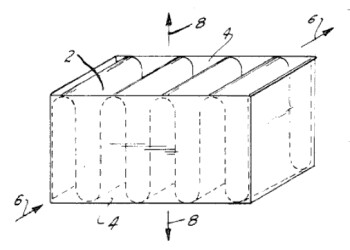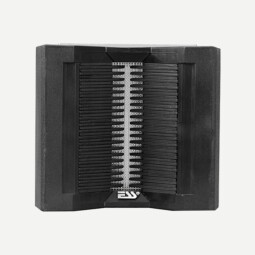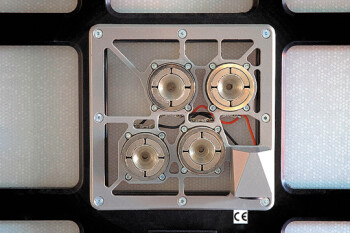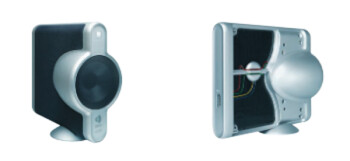In the last article of this series dedicated to electrodynamic speakers we'll talk about some unique and interesting designs. The biggest difference with these two examples compared to previous speaker-types described, is that the diaphragms don't have a uniform motion, and the membranes actually fold.
Oskar Heil’s Acoustic Transformer

Developed in the '60s and marketed in the '70s, this transducer looks very similar to a ribbon one, but they are indeed different. The axis of the motive power isn’t the same: The diaphragm doesn’t move back and forth like with a classic ribbon (where the eventual folds never change angle), instead it folds in on itself like an accordion, sucking in and expelling the air between the folds. Thus, the air acquires a higher speed than the diaphragm itself, hence the name Air-Motion Transformer. This design yields a large dynamic range and low inertia, given the lightness of the moving section. The favorite frequency bands for these transducers are the mids and the highs.
The circuit carrying the signal is made up of aluminum bands placed in parallel over the synthetic ribbon. This particular motion is made possible thanks to the direction of the current passing through the ribbon. The current travels in a different direction on every fold, producing an opposite effect from one fold to the next. When a fold moves in one direction, its neighbor moves in the other, depending on the direction of the signal’s oscillation. The magnets are placed laterally, letting both sides of the ribbon radiate (if the rear is not dampened). Its natural directivity is a figure-8, with the same response on both sides of the transducer.

An interesting point here is the irreversibility of the transducer. In other words, it can’t behave like a microphone. The acoustic vibrations can make it move back and forth, but they won’t alter the gap between the folds and, hence, won’t produce any induction on the circuit. Unlike the ribbon we saw in the previous article, the transformer doesn’t respond to piston-like movements, but rather to the folding of the diaphragm. Some brands still manufacture this type of speaker, mainly aimed at hi-fi enthusiasts. ESS was the first to market the Air-Motion Transformer in 1973.
NXT Acoustic Panel
It’s also called DML, which stands for Distributed Mode Loudspeaker. The technology behind these peculiar loudspeakers was discovered by chance by the British Ministry of Defence in the early '90s, when they were carrying out some military experiments. The license to exploit it commercially was first granted to NXT, a private company, followed by several others (TEAC, Advent, etc.). Its operating principle is the opposite of what you expect from a conventional speaker.. The panel is basically a film (usually fiberglass covered with a honeycombed structure) excited by two or four moving coils whose role is to generate as many vibration modes as possible. So, while these modes (resonances) are usually considered the number one enemy in speaker design, in this case they are indispensable to the operation of the speaker.

The diaphragm obviously doesn’t work like a piston and it radiates on both sides along the entire surface, producing a directivity that is particular to this panel (resulting from the unique correlation between the front and rear waves). The placement of the moving coils must be chosen very carefully, so they are coupled uniformly with the maximum amount of modes. The production of these speakers depends a lot on modeling: It’s very hard to predict the behavior of the diaphragm without the help of computers.
The main defects of these transducers are the difficulty they have reproducing low frequencies, which require a very large panel, and their mediocre efficiency. Nevertheless, some progress has been made and probably will still be made in the future. Compared to cone speakers, you experience a slower fall in level when you move away from them.
Besides their obvious advantages where space is a concern, these transducers are also used whenever a wider directivity is desired. And they can also function as sound-proofing panels, since they diffuse surrounding noise with reverse phase and the lowest latency possible. They have also found a place in home cinema and multimedia applications, sometimes coupled with a conventional speaker for the lows.

After dedicating quite some time to electrodynamic speakers, we’ll move on to another type of transducer, electrostatic loudspeakers, in the next article.

